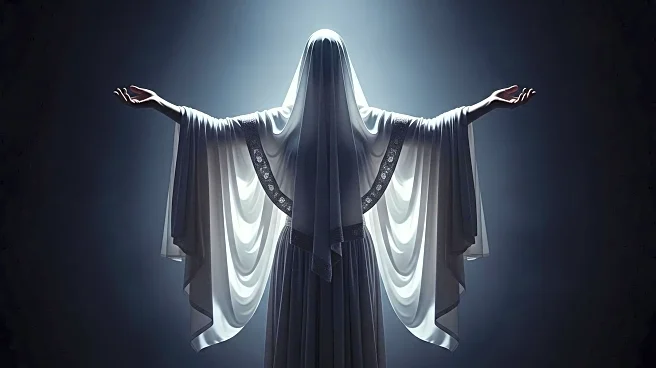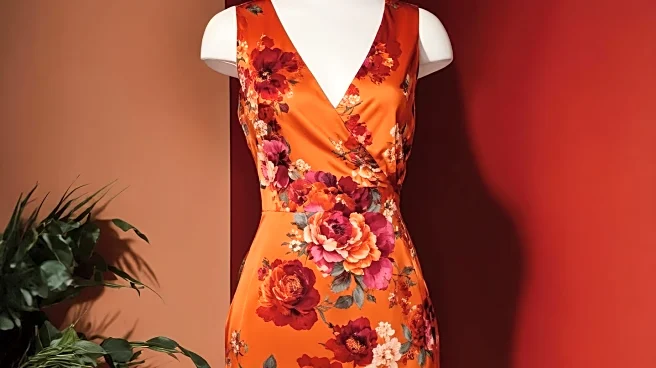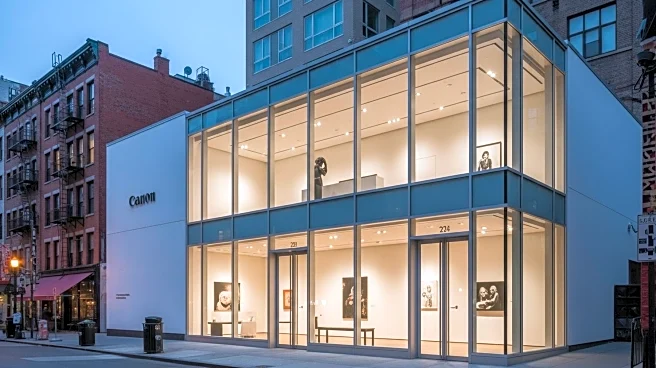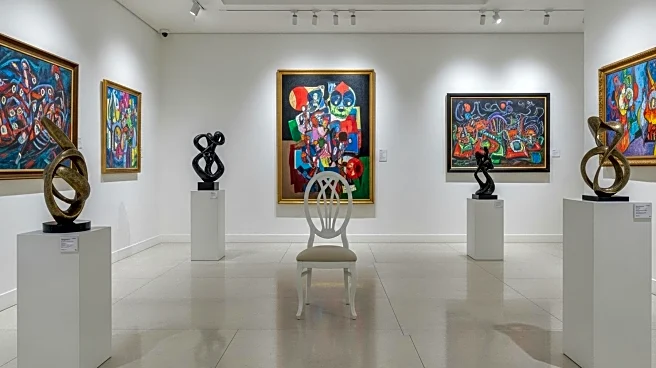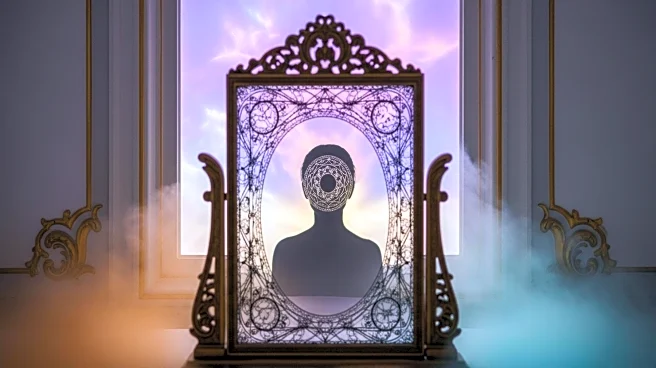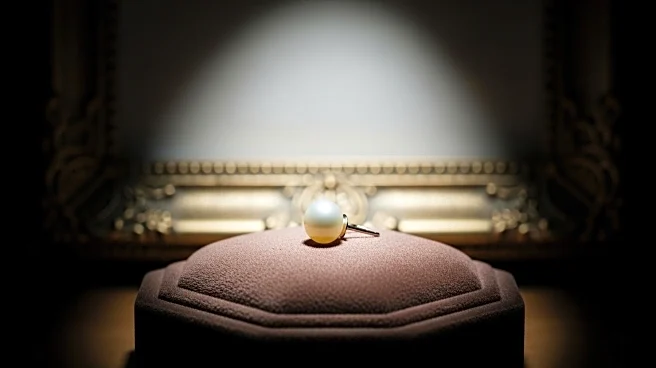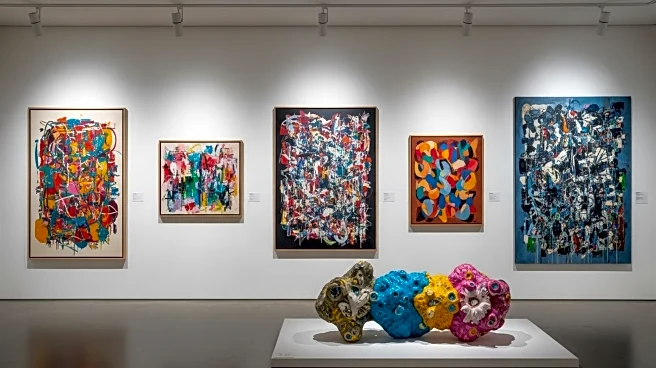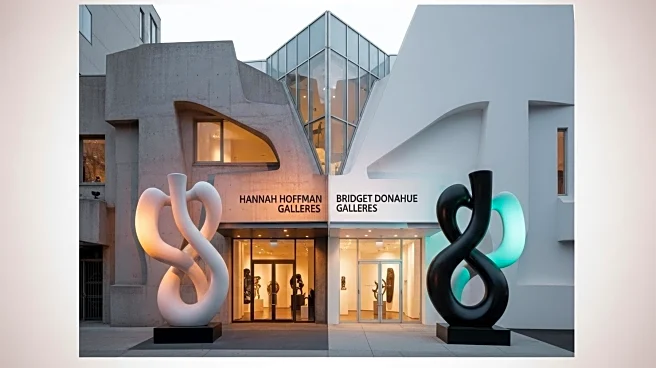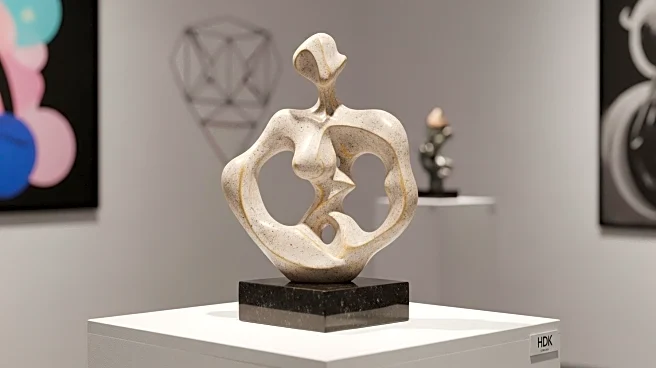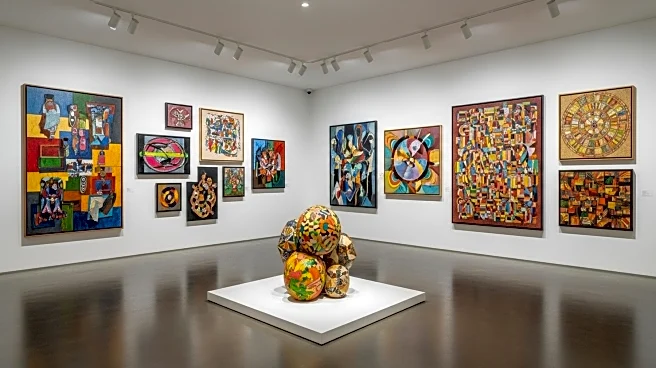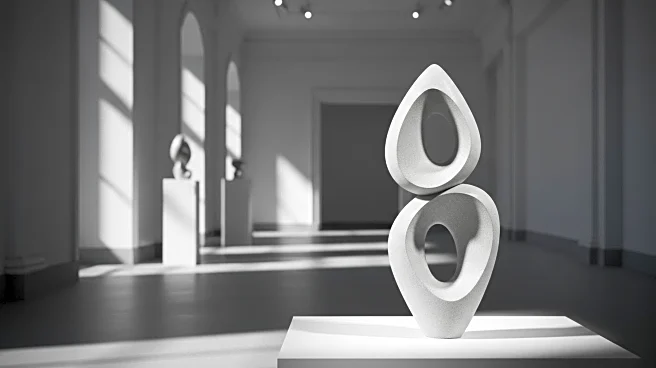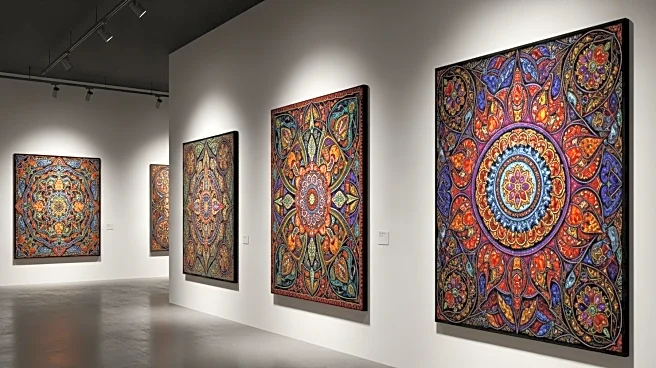What is the story about?
What's Happening?
A new study by Philipp Zitzlsperger, a professor of Medieval and Modern art history at the University of Innsbruck, suggests that Leonardo da Vinci's Salvator Mundi portrays Christ in attire typically associated with women. Zitzlsperger's analysis, published in Artibus et Historiae, highlights the low-cut, rectangular neckline of Christ's tunic, which he argues is unprecedented for a male figure of elevated social status during the Renaissance. He notes that similar necklines are found in female portraits of the period, such as Leonardo's La Belle Ferronnière and Raphael's Portrait of Elisabetta Gonzaga. Additionally, the blue-on-blue color scheme of Christ's tunic and cloak is said to resemble wardrobe choices for depictions of the Virgin Mary from the 12th century onward. Zitzlsperger posits that these elements signify a union of Christ and the Virgin, reflecting gender fluidity aesthetics in Renaissance Italy.
Why It's Important?
The study challenges traditional interpretations of one of the world's most expensive paintings, potentially altering perceptions of Renaissance art and its symbolic meanings. If Zitzlsperger's hypothesis gains traction, it could influence art historical discourse regarding gender representation in Renaissance artworks. This debate also touches on broader themes of gender fluidity and androgyny, which are increasingly relevant in contemporary discussions about identity. The implications extend to the art market, where the painting's value and authenticity have been subjects of controversy since its record-breaking sale in 2017.
What's Next?
The study is likely to spark further scholarly debate and analysis, with art historians examining other works by Leonardo and his contemporaries for similar themes. Museums and collectors may reassess the painting's significance and provenance, potentially impacting its valuation and exhibition. As discussions continue, the art community may explore the broader implications of gender fluidity in historical contexts, influencing future interpretations and exhibitions of Renaissance art.
Beyond the Headlines
Zitzlsperger's theory raises questions about the intersection of art and gender, prompting a reevaluation of how historical artworks reflect societal norms and values. The study may encourage a deeper exploration of the cultural and ethical dimensions of gender representation in art, fostering dialogue about the role of artists in challenging or reinforcing gender stereotypes. This could lead to a broader understanding of how art can serve as a medium for social commentary and change.
AI Generated Content
Do you find this article useful?
